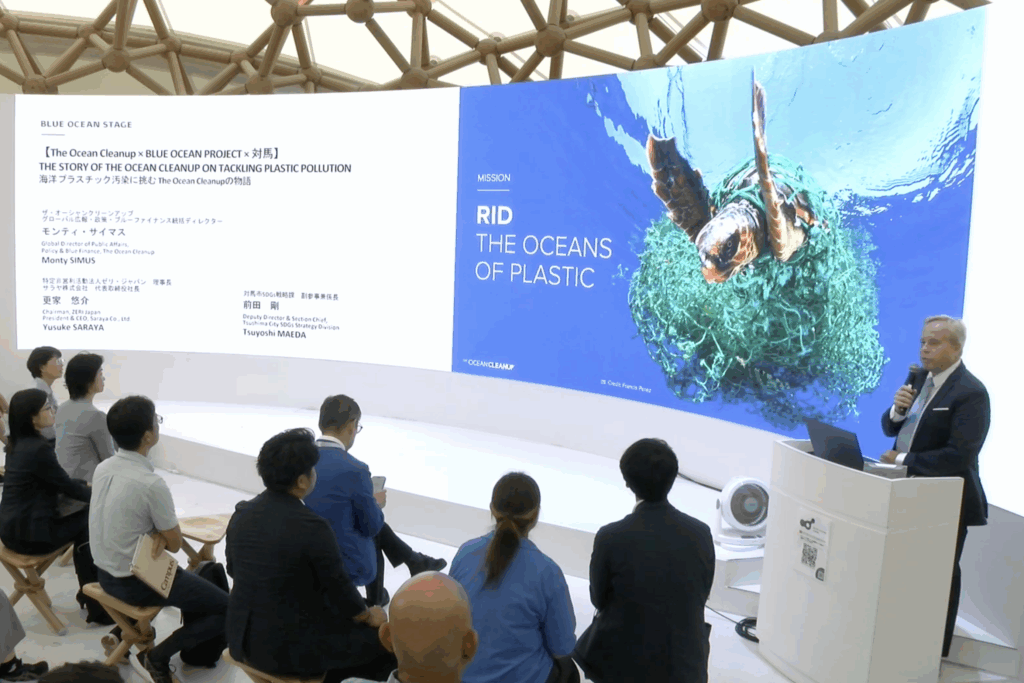
On Thursday, September 25th, The Ocean Cleanup, a Dutch nonprofit organization working to solve the problem of marine plastic pollution, held a lecture event, discussing their achievements to date and the future outlook for the BLUE OCEAN PROJECT Tsushima.
THE STORY OF THE OCEAN CLEANUP ON TACKLING PLASTIC POLLUTION / The Ocean Cleanup × BLUE OCEAN PROJECT × Tsushima
Boyan Slat, Founder and CEO of The Ocean Cleanup, appeared via video at the beginning of the event and delivered a powerful message: “Our mission is to eliminate plastic from the world’s oceans.” He also explained that The Ocean Cleanup is using science and technology as a “force for good” to remove plastic waste from rivers and oceans. He reported that they have collected approximately 40 million kg of waste to date, preventing 2-5% of plastic from entering the ocean.
Monty Simus, Global Director of Public Affairs, Policy & Blue Finance at The Ocean Cleanup, spoke at the event, introducing the organization’s two missions: one is to remove trash already in the ocean, and the other is to prevent new plastic from entering the ocean from rivers. He particularly discussed a large-scale collection project in the “Great Pacific Garbage Patch,” which stretches between California and Hawaii, and efforts to prevent new plastic from entering the ocean from rivers in nine cities around the world.
Monty Simus also emphasized the importance of scientific data analysis. According to the organization’s research, approximately 80% of the world’s plastic waste from rivers comes from just 1,000 rivers. The Ocean Cleanup is developing six solutions and technologies tailored to the characteristics of each river. He explained that the organization uses an “Automated Debris Imaging System,” which uses cameras mounted on drones, aircraft, and ships to photograph and analyze trash. By visualizing the distribution and flow of plastic, the organization is able to identify the most effective collection points.
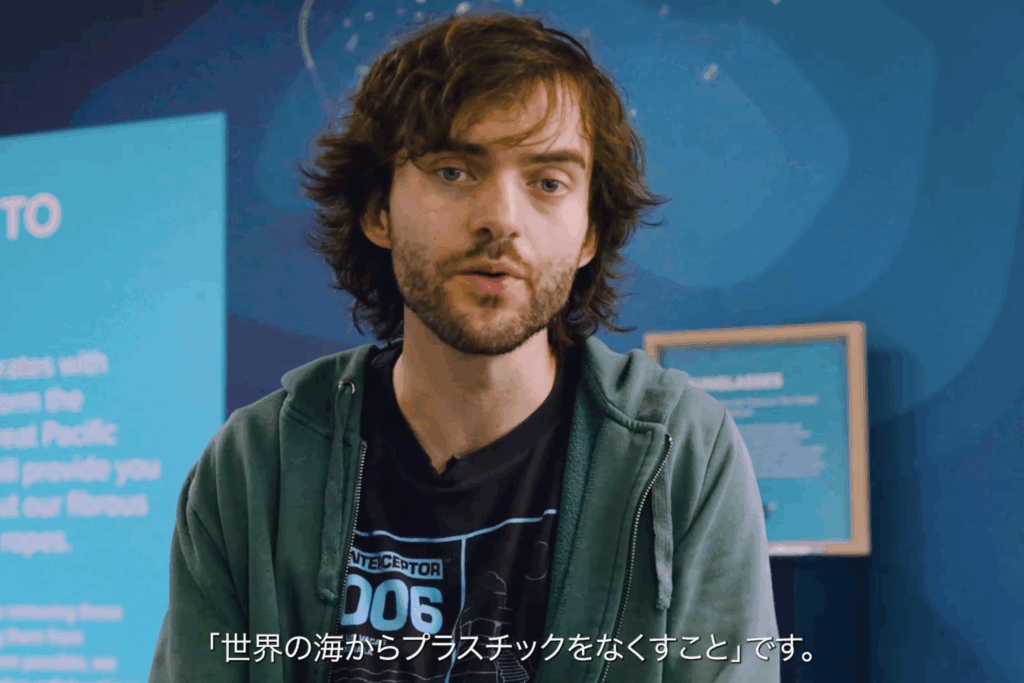
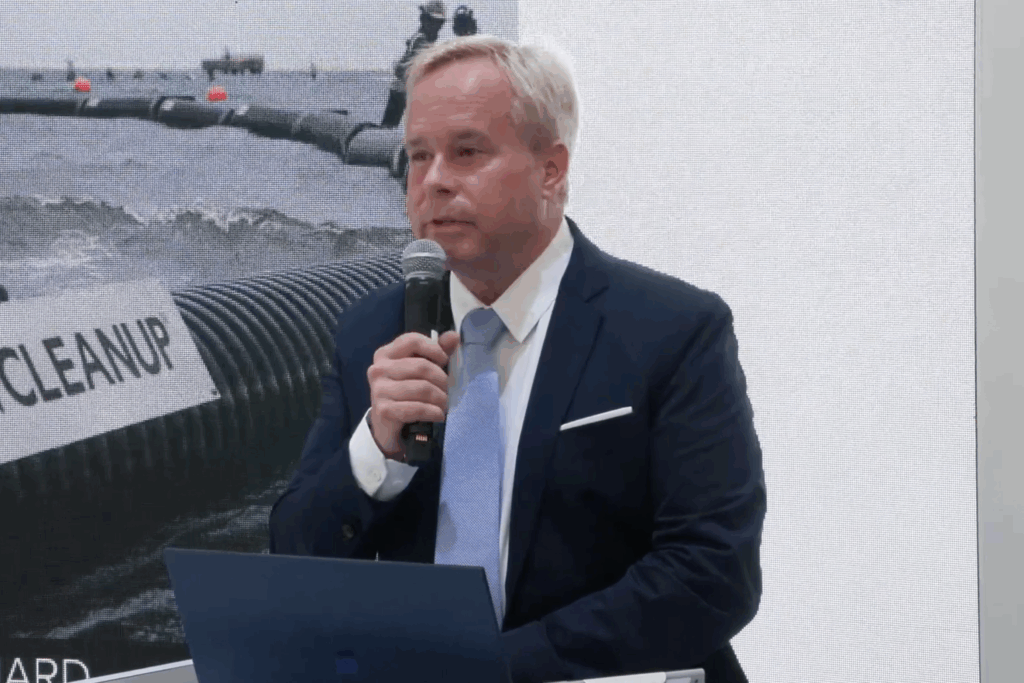
Next on stage was Tsuyoshi Maeda, deputy councilor and section chief of Tsushima City’s SDGs Strategy Division, who explained that “Tsushima collects approximately 8,000 cubic meters of marine waste annually, but only about 10% is recycled. Much of the remaining waste cannot be sorted and is buried in the island’s valleys.” He described this as “the sad reality behind a society of mass production and mass waste,” and emphasized the need to communicate Tsushima’s nature and challenges to the world.
Yusuke Saraya, chairman of ZERI JAPAN, noted that approximately 90% of plastic pollution arrives from overseas, and that the problem is particularly severe on Tsushima. He explained that one solution is a project to compress and reuse styrofoam contained in marine waste collected on Tsushima. He explained that a machine capable of compressing and recycling styrofoam is scheduled to be installed on Tsushima within the year, which is expected to improve the efficiency of waste disposal on the island.

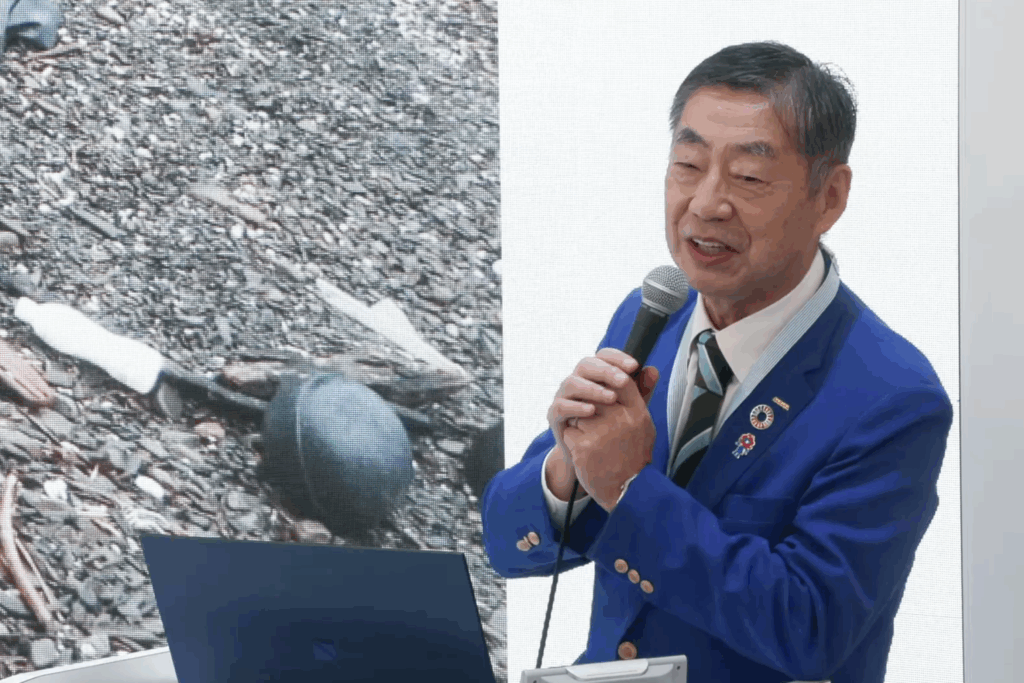
During the talk session at the end of the event, Monty Simus said, “Significant change cannot be achieved without collaboration between governments, businesses, and civil society.” Maeda and Saraya Yusuke also emphasized that the problem of marine debris cannot be solved by one country alone, and that international cooperation is essential.
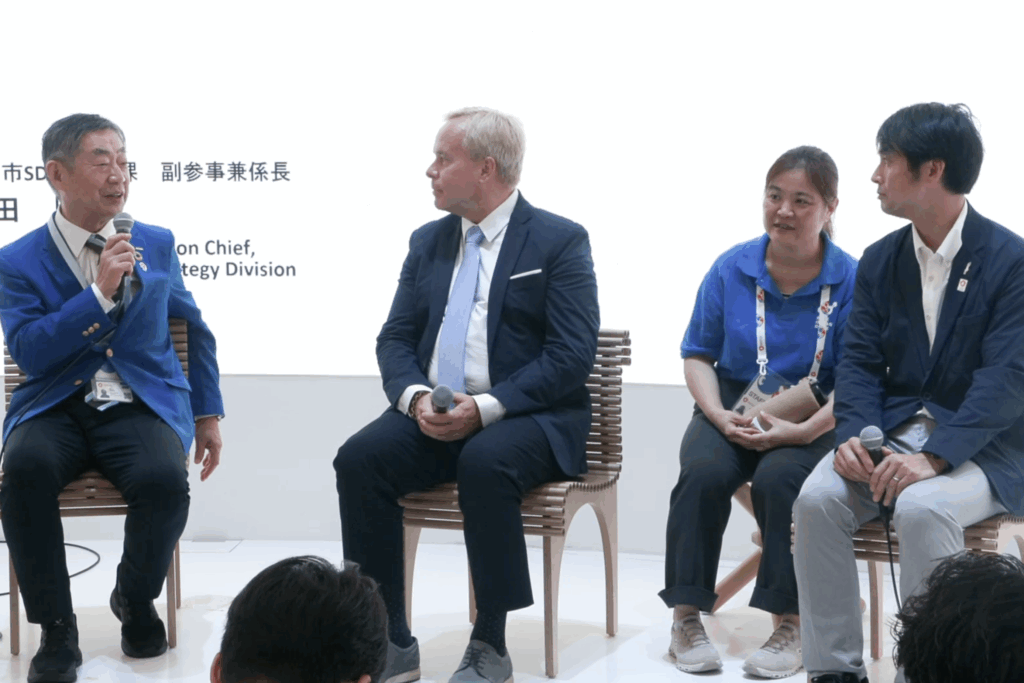
▼The event is available to watch on YouTube’s <BLUE OCEAN DOME official channel>. Please take a look.
【#132】Ocean CleanUP(ZERI JAPAN/The Ocean Cleanup)